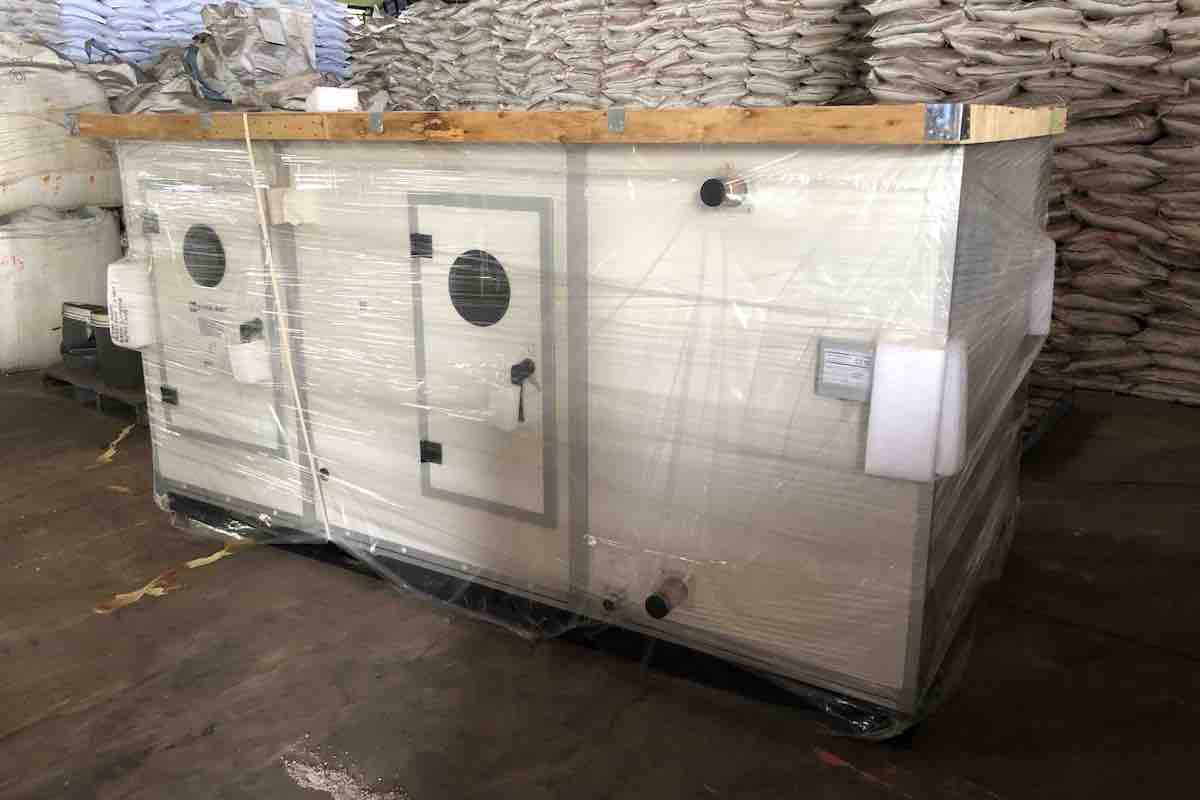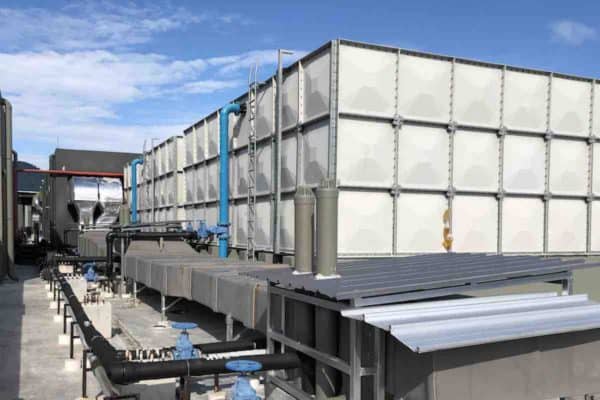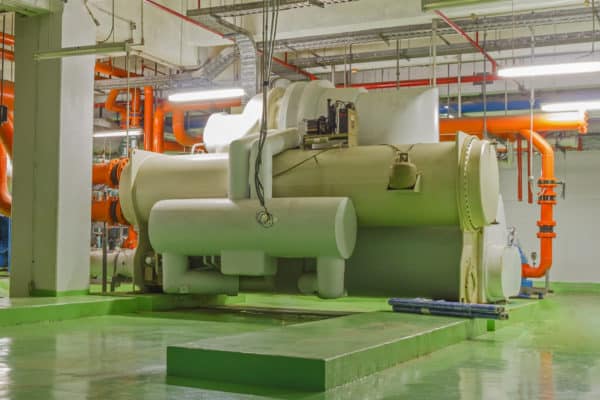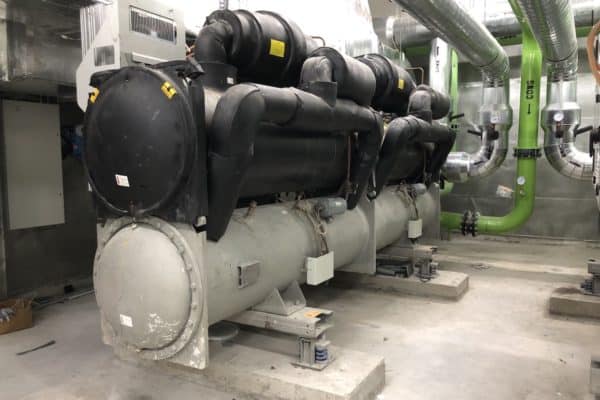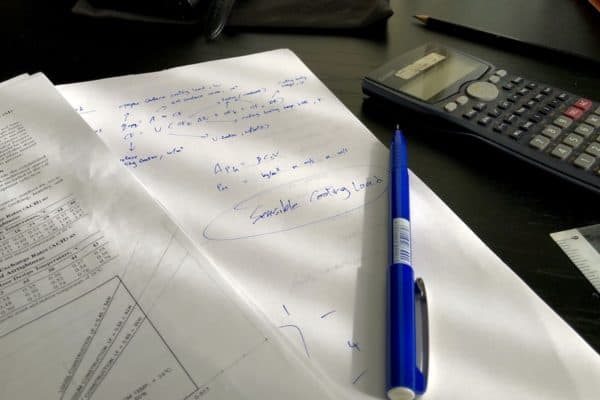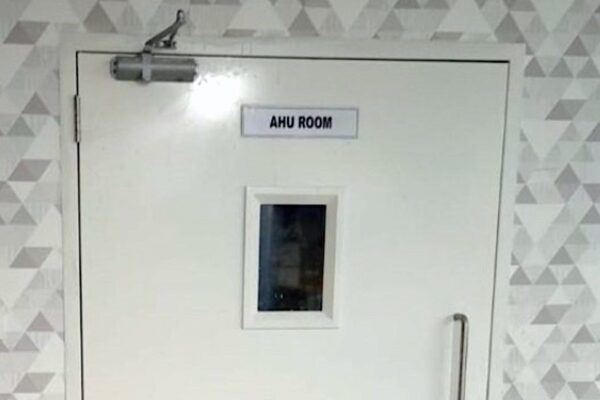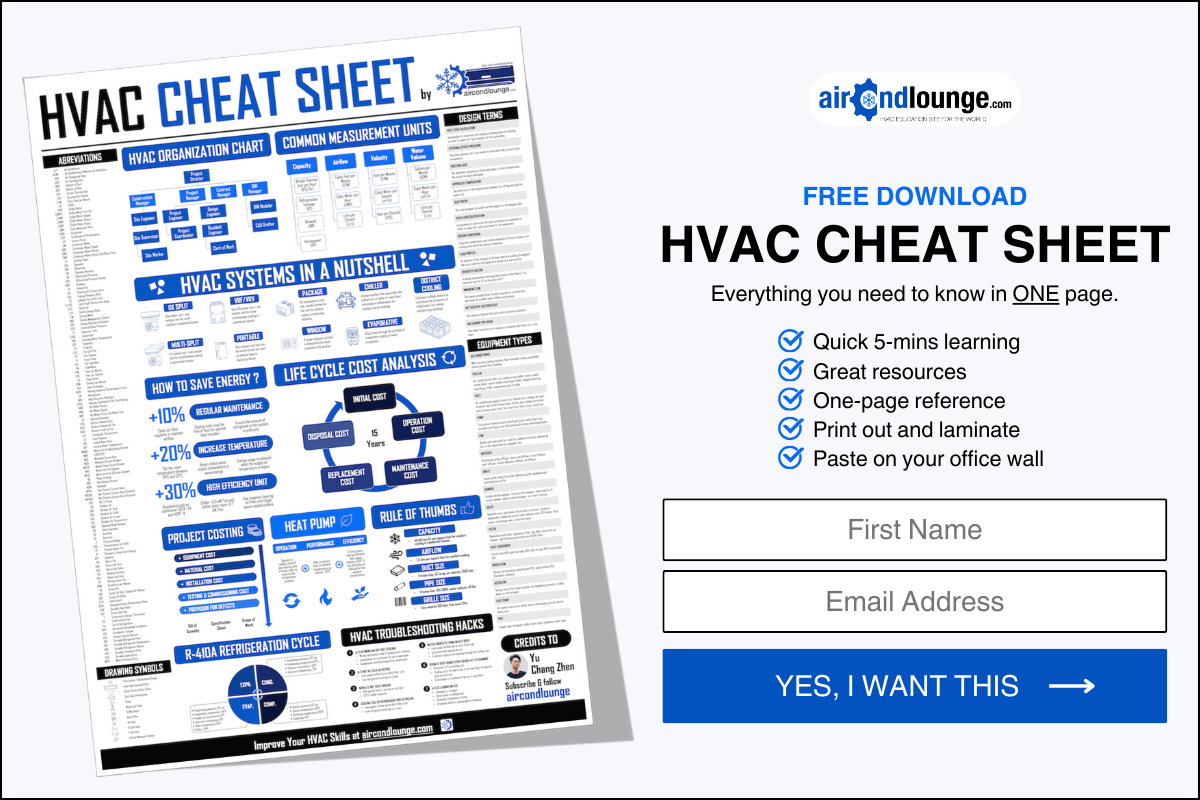What is PAU in HVAC? (PAU for ACMV)
PAU is a common acronym used in HVAC. PAU is a cost-effective way to control the humidity level in buildings, especially in humid climates. So, I did some research.
PAU stands for pre-cool air handling unit or primary air handling unit. PAU is also known as PAHU. PAU or PAHU is used to treat the high humidity outdoor air and supply it to the building’s air handling units to achieve the desired humidity control, especially in humid climates.
Pre-cool air handling units (PAUs) may look exactly the same as an air handling unit (AHU) from the appearance. However, they often have additional components designed to directly handle the harsh outdoor air.
How PAU Works?
PAUs often have the same internal components as AHUs. In addition, they have a heat pipe that works passively to reheat the outdoor air so that the air leaving the PAUs is both cooled and has its humidity reduced.
In countries such as Malaysia and Singapore, the outdoor air is very humid. On the high side, the outdoor air dry bulb and wet bulb temperature are around 35°C and 28°C respectively. Hence, the relative humidity is around 59%.
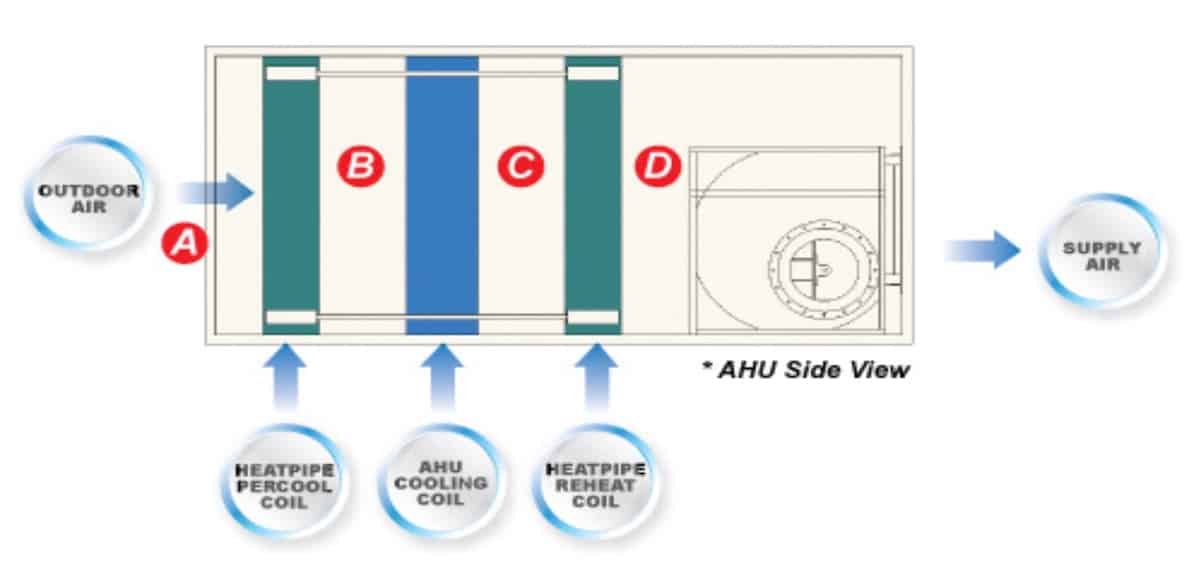
In the above photo, point A-B-C-D is the conditions of the air. The outdoor air enters the PAU at point A and leaves with the condition at point D.
Point A is the pure outdoor air in which the dry bulb and wet bulb temperature is around 35°C and 28°C respectively, assuming in Malaysia or Singapore. The pure outdoor air enters the PAU, passes through filters and then goes through the pre-cool coil section of the heat pipe.
At point B, the outdoor air is mildly cooled to around 28.5°C dry bulb and 26.5°C wet bulb temperature before it enters the cooling coil of the PAU. At this point, the relative humidity of the outdoor air is around 85.7%.
At point C, the outdoor air is severely cooled to around 13.5°C dry bulb and 13.1°C wet bulb temperature, resulting in the outdoor air having a relative humidity of around 95.7%.
After that, the outdoor air passes through the heat pipe once again but this time, it is the reheat coil section of the heat pipe. At point D, the heat pipe heats the outdoor air back to around 20°C dry bulb and 15.5°C wet bulb temperature which leave the relative humidity of the outdoor air at around 63.8%.
Therefore, PAUs supply outdoor air at a temperature around 20°C and relative humidity around 63.8% to AHUs. So, the AHUs take in the pre-cooled air, mix it with the return air and further cool the mixed air to a temperature around 14°C and relative humidity around 55% and below.
In the meantime, I would like to inform you that you can learn quicker by getting my HVAC Begin (eBook) if you’re a beginner. But, if you have a year or two of experience, then I would suggest you consider my HVAC Basics (eBook). Nonetheless, I encourage you enroll in my HVAC Beginner Course: 10 Days to Become Competent in HVAC if you want to equipped yourself with a complete set of basic HVAC skills.
HVAC Beginner Course
Learn the most basics and foundational HVAC skills including cooling capacity calculation, equipment selection, duct sizing, pipe sizing, exhaust fan sizing, controls, electrical and more.
Heat Pipe
PAUs or pre-cool air handling units are often tied together with heat pipes. After all, their main function is to help reduce the indoor air humidity level.
If we take a look at the psychrometric chart, the performance of typical PAUs look something like this:

Heat pipes provide sensible cooling only. Basically, there are two types of cooling; a) sensible cooling and b) latent heat cooling. For sensible cooling, dehumidification does not take place. Hence, we can see that the reduction of the dry bulb temperature from 35°C to 28.5°C while there is only a slight change in the wet bulb temperature.
Why Use PAU?
Traditionally, the outdoor air is supplied to AHUs via fresh air ventilation fans. But, the problem is that it is difficult for the AHUs to control the indoor air humidity level when the outdoor air is very humid.
AHUs dehumidify air through the condensation process that happens at their cooling coil. To incur condensation, the surface temperature of the cooling coil must be lower than the dew point of the air. Hence, the cooling coil is cold.
As a result, the supply air temperature is also cold, usually at around 14°C. As the AHUs keep circulating the indoor air to cool and dehumidify at the same time, the indoor air will drop to the desired temperature which is usually at around 24°C.
However, the AHUs may not leave enough time for the dehumidification process, resulting in an undesired humidity level, usually at around 65% relative humidity or more.
In most cases, AHUs take in 90% return air and 10% outdoor air. If the outdoor air contains a lot of moisture (high wet-bulb temperature), the AHUs may not able to reduce the indoor air humidity level appropriately to around 55% relative humidity or less.
One way to further reduce the humidity level is to cool the air further but it’ll cause overcooling problems. However, a heat pipe can be added to each AHU to reheat the air back to the desired temperature so that the room temperature is maintained at around 24°C.
But, a typical building may have more than 20 AHUs. So, instead of installing more than 20 heat pipes, a heat pipe can be installed in one or two PAUs to reduce the humidity level of the outdoor air before it enters the building’s AHUs.
Therefore, with PAUs, the indoor air humidity level can be controlled while overcooling problems are prevented.
Benefits of Using PAUs
Apart from good humidity control, using PAUs also yield a few benefits. So, below are the benefits of using PAUs or pre-cooled air handling units:
- Indoor Humidity Control – PAUs reduce the humidity level of the outdoor air thereby allowing AHUs to better control the indoor air humidity level.
- Improve Indoor Air Quality – PAUs serve as an extra outdoor air filter before AHUs. Besides, air quality monitoring devices can be installed at PAUs to monitor and control indoor air quality.
- Reduce AHU Physical Dimension – PAUs reduce the temperature of the outdoor air thereby allowing AHUs to have a smaller cooling capacity and thus, a smaller physical dimension.
- Prevent Overcooling – PAUs eliminate the need for AHUs to be oversized for better dehumidification and therefore, prevent overcooling.
Conclusion
PAUs are often associated with heat pipes. In humid climates, PAUs or pre-cooled air handling units are an excellent method to control the indoor air humidity level while introducing sufficient outdoor air to ensure good indoor air quality.
Lastly, consider my HVAC Begin (eBook) if you’re a beginner and you want to have a foundational knowledge in HVAC. But, if you have a year or two of experience, then I would suggest you consider my HVAC Basics (eBook). Nonetheless, I encourage you enroll in my HVAC Beginner Course: 10 Days to Become Competent in HVAC if you want to equipped yourself with a complete set of basic HVAC skills.
HVAC Beginner Course
Learn the most basics and foundational HVAC skills including cooling capacity calculation, equipment selection, duct sizing, pipe sizing, exhaust fan sizing, controls, electrical and more.
If you have anything to add (or ask) about this topic, leave a comment down below!


